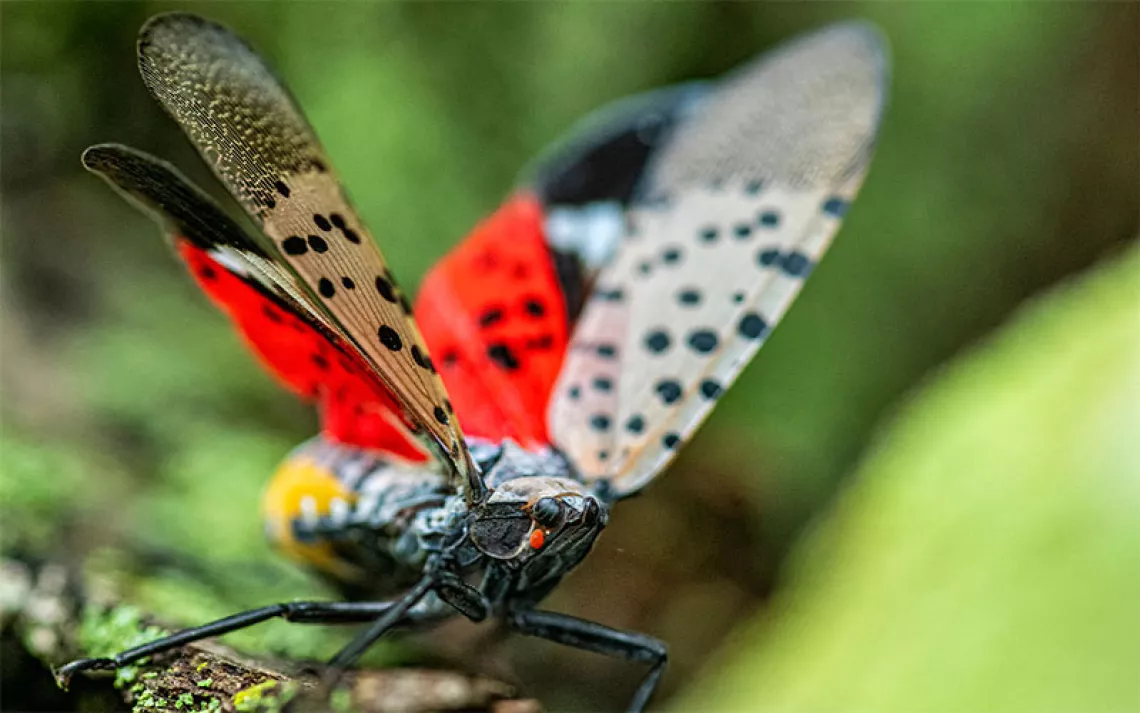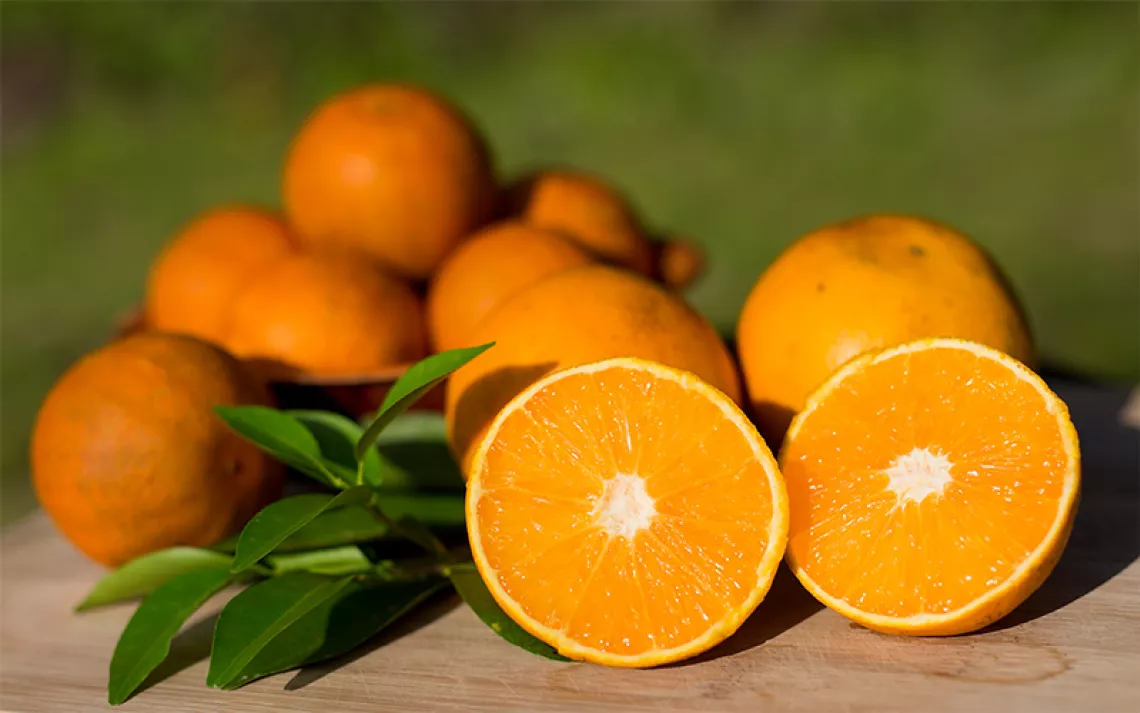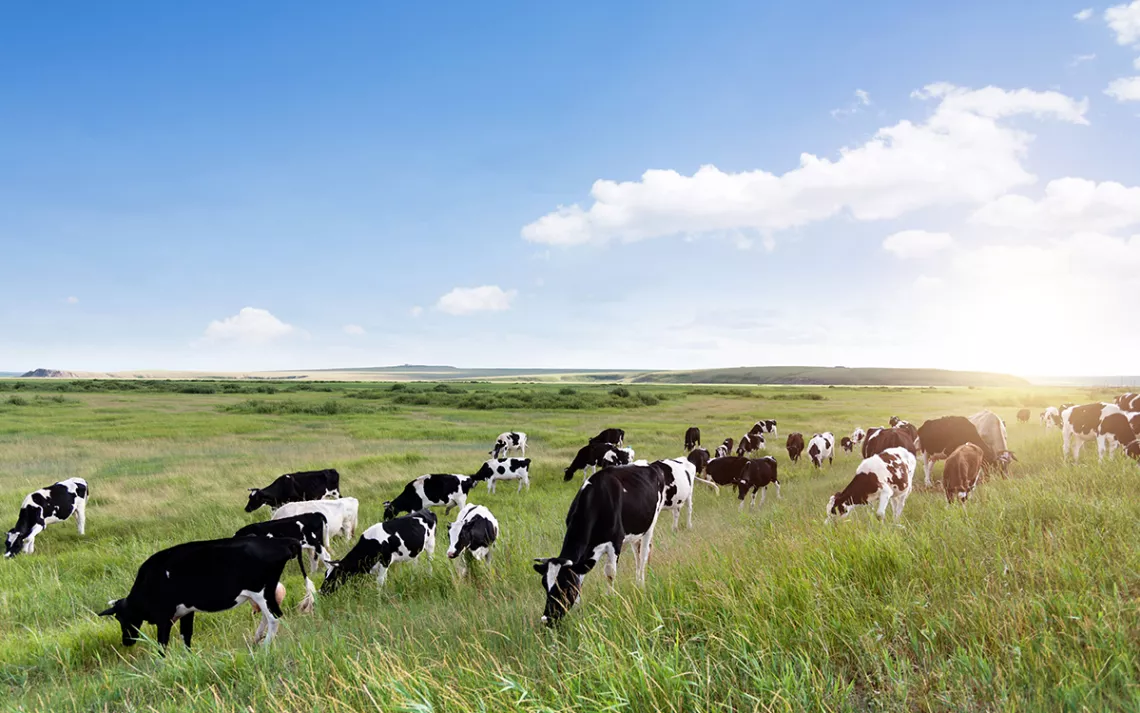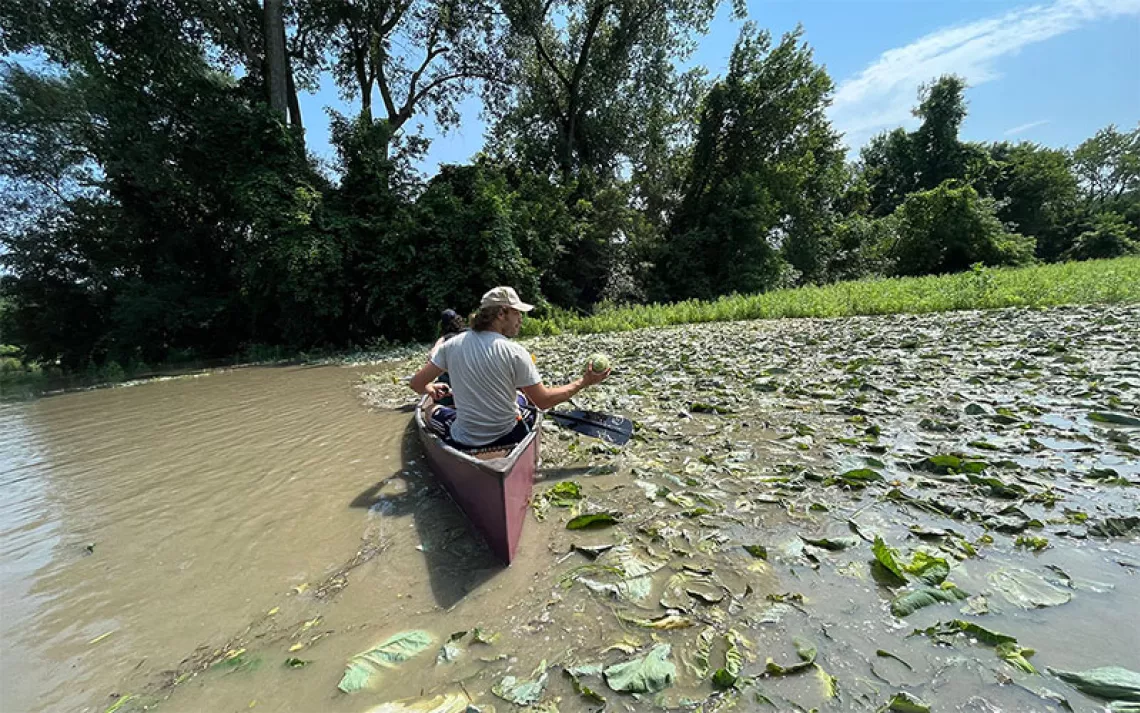Crop Scientists Race to Create a Climate-Change-Resilient Agriculture
Photographer Lucas Foglia accompanies plant breeders as they search for the wild relatives of common food crops
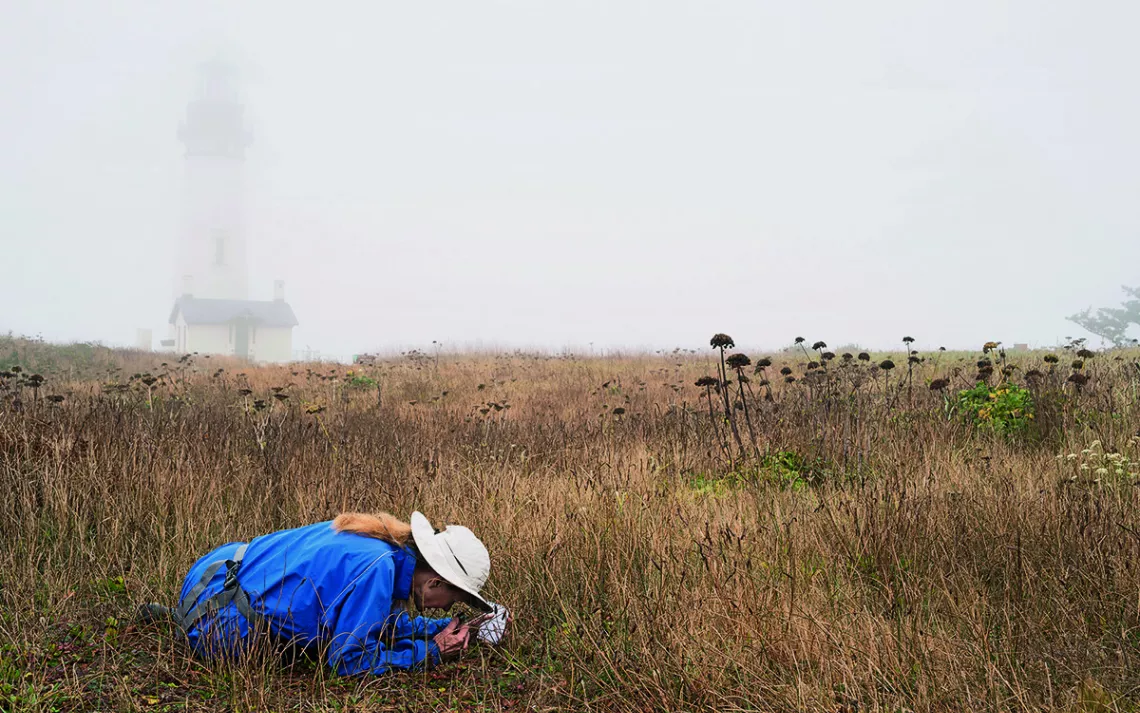
Kim Hummer, a researcher for the USDA, looks for wild strawberries on the Oregon coast. | Photographs by Lucas Foglia
Kim Hummer's official title is Research Leader for the U.S. Department of Agriculture's National Clonal Germplasm Repository: Small Fruit and Specialty Crop Curator. Another description might be simply "plant explorer."
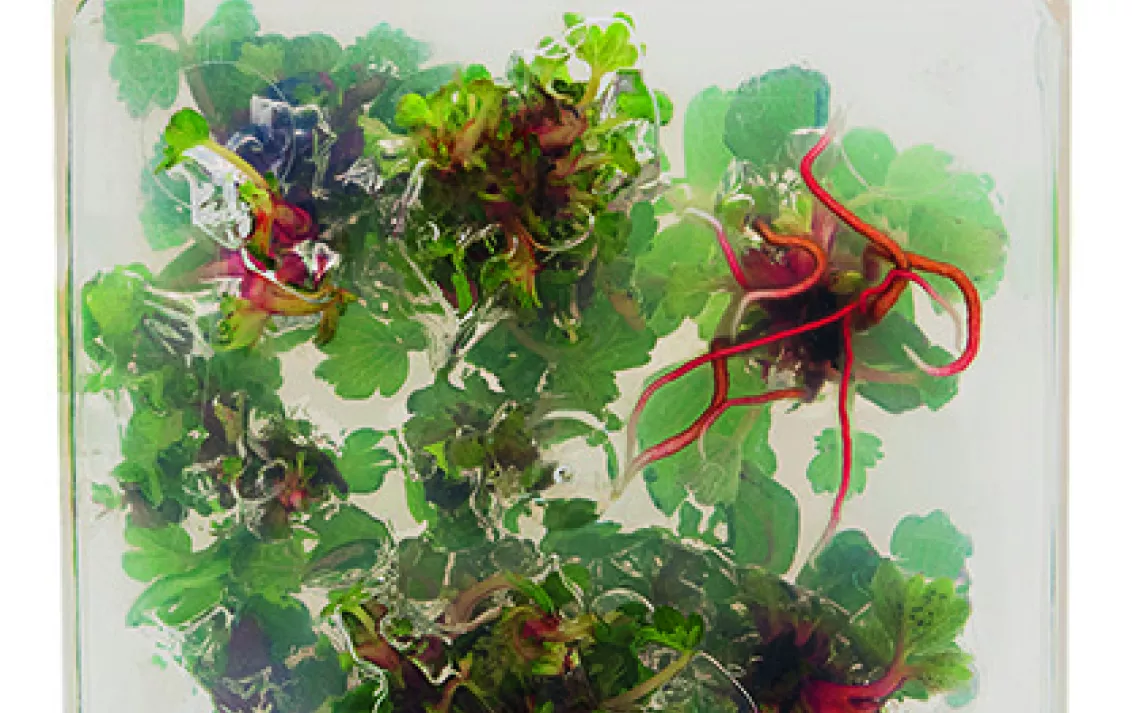
Strawberry tissue culture
In the course of her 35-year career with the USDA, Hummer has been on 18 major plant-collection expeditions, including trips to Sardinia, the remote Japanese island of Hokkaido, and the highlands of Vietnam. Hummer's goal on such missions has been to locate the wild relatives of common food crops and bring them back to her Oregon lab for cataloging and storage. "These are locations where the native [plants] grow and we can collect wild germplasm and then distribute it, and we can assess the wild materials for different traits," says Hummer, whose specialty is small fruits like strawberries, blueberries, and blackberries. "There could be some more able to tolerate heat, or ones that have repeat or recurring blooming."
Hummer's work is just one piece of a broader international effort. Across the globe, botanists are working to identify what scientists call "crop wild relatives"—the weedy cousins of our staple foods. Researchers have understood for more than a century that preserving the wild progenitors of domesticated crops is essential for sustaining the genetic resilience of global agriculture. But the current effort is fueled by a particular urgency, and much of the work to identify and preserve crop wild relatives has been undertaken since roughly 2010.
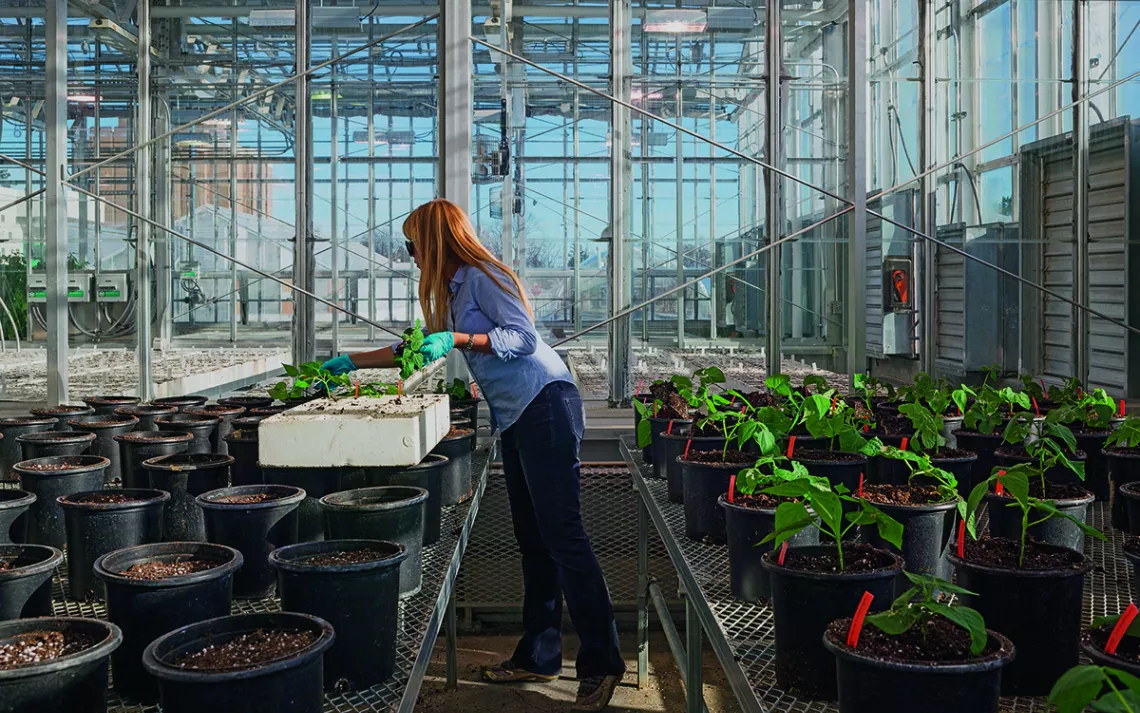
Planting string beans at the New York State Agricultural Experiment Station in Geneva
The threat from climate change to food production is at the center of this new urgency. As droughts, extreme rainstorms, and other erratic weather patterns intensify, farmers will need crops that can cope with such stresses. And plants that are wild or weedy—proven survivors—have the traits to meet those challenges. "With global climate change, people are coming to realize that having a broad germplasm collection is a matter of food security," Hummer says, referring to the genetic material in seeds and plant tissues. "And all of that comes from the wild. Our mission is to preserve this material for all people for all time."
The seeds of our future agriculture, it turns out, reside in the deep evolutionary past.
All food crops—wheat, rice, pumpkins, tomatoes, apples—were once wild, plants that sprang unheralded from the earth. As humans harnessed those plants for our needs, we naturally prioritized the traits that served us best: sugars for tastiness, grains that resist shattering and spilling their kernels on the ground, uniformity for ease of harvest. Domestication, however, is something of a devil's bargain. When we selected for some traits, we lost others: hardiness against pests and diseases, drought resistance, salt tolerance. As any backyard gardener knows, crossing two plants creates a hybrid vigor that leads to greater production. But any gardener who has wrestled with morning glory or oxalis also knows that there is what you could call "weedy rigor"—an untamed plant's unyielding drive to survive. By collecting crop wild relatives, scientists seek to capture the evolved hardiness of feral plants in order to breed those traits into domesticated crops.
Here's how it works: First, collection teams like Hummer's head into undeveloped areas to gather plant materials, either seeds or tissues. Often the collectors know what they are looking for. But sometimes there are serendipitous discoveries—for example, an especially tall wild sunflower growing on an arid slope, a sign that the plant has developed a way to thrive without much water. The specimens are brought back to field stations and regional seed banks. Here in the United States, the samples are eventually sent to the national seed bank at Fort Collins, Colorado—a secure facility that, with more than half a million specimens in its collection, is like the Fort Knox of American botany. (Most samples are also sent onward to the Global Seed Vault, on the Norwegian island of Svalbard.)
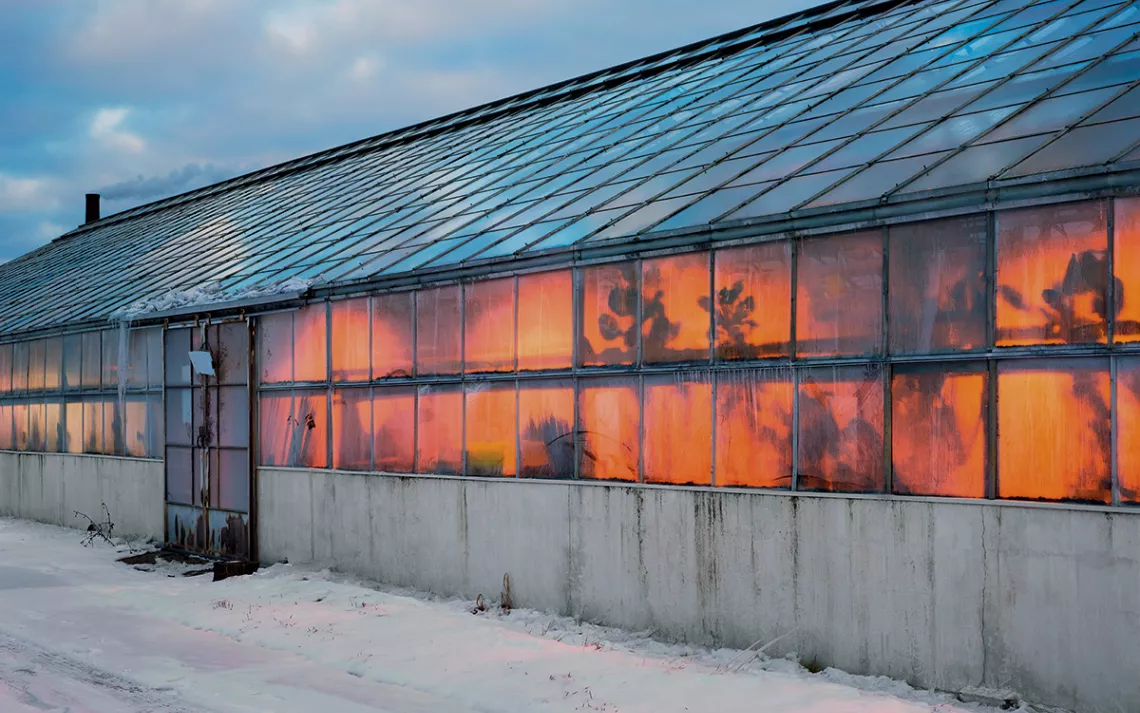
A greenhouse at the New York State Agricultural Experiment Station
After the specimens have been cataloged and stored, they are available to plant breeders looking to create, say, a strawberry that's resistant to soilborne fungal diseases or a potato that can beat back blight. The USDA's regional seed banks send out millions of seed packets and tissue samples annually. This is old-fashioned crop breeding; no genetic modification required. Already, this process has led to a more resilient variety of sugar beet, a crop that is widely cultivated for animal feed.
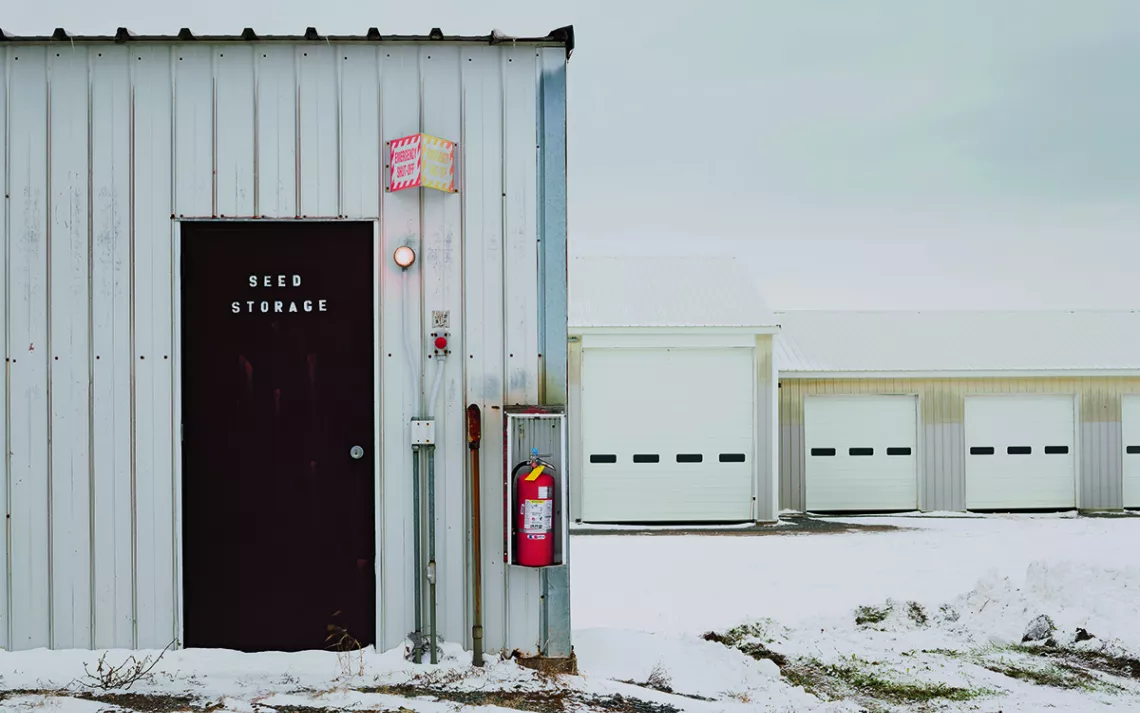
Buildings at the New York State Agricultural Experiment Station
At the breeding stage, the trick is to balance the desired domesticated traits against the wild crop's strengths. Advances in genomic sequencing have given plant breeders new tools to pluck specific traits from crop wild relatives. Nevertheless, the task often requires developing multiple generations of plants before the breeders get it just right. "The technology for breeding has improved, especially now that we can do targeted selection of traits," says Colin Khoury, a researcher for both the national seed bank and the International Center for Tropical Agriculture. Still, it's a delicate procedure. "It's a bit like crossing a house cat with a wildcat. You don't necessarily want it sitting on your sofa."
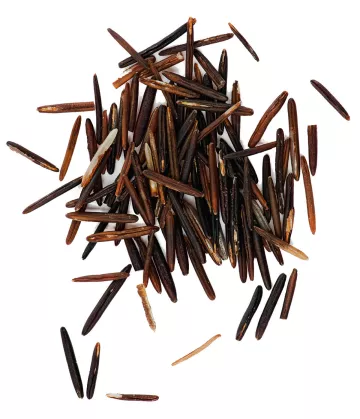
The USDA's national and regional seed banks store hundreds of thousands of plant varieties, such as domesticated sorghum, cultivated wild rice, and wild sorghum.
Khoury points out that the new enthusiasm for collecting crop wild relatives reveals a central irony of our global food system. As our agriculture becomes ever more homogeneous (today humans rely on a mere 30 crop species, out of an estimated 30,000 edible species, for the bulk of our calories), protecting the wild origins of plant diversity becomes more important as a strategy for avoiding an agricultural genetic bottleneck. By harnessing crop wild relatives, scientists are creating an antidote to the uniformity of today's global agriculture by reaching back in time.
Another irony: Even though crop wild relatives are proven survivors that are extremely adaptable, they are also often highly localized and therefore susceptible to habitat destruction or to the dislocations wrought by climate change. By 2050, up to a quarter of plants could be extinct—meaning that collectors like Hummer are in a race against time.
All of which provides one more incentive for conservation of the world's remaining wildlands. Agriculture is, of course, the cradle of civilization; without the farm, there's no city. And, as the new crop science demonstrates, the wild is the cradle of agriculture. Plant scientists working with crop wild relatives are building a lifeboat of sorts, a genetic ark that will be the foundation of a climate-change-adaptable, 21st-century agriculture.
This article appeared in the March/April 2017 edition with the headline "Seeds of the Future."
 The Magazine of The Sierra Club
The Magazine of The Sierra Club
